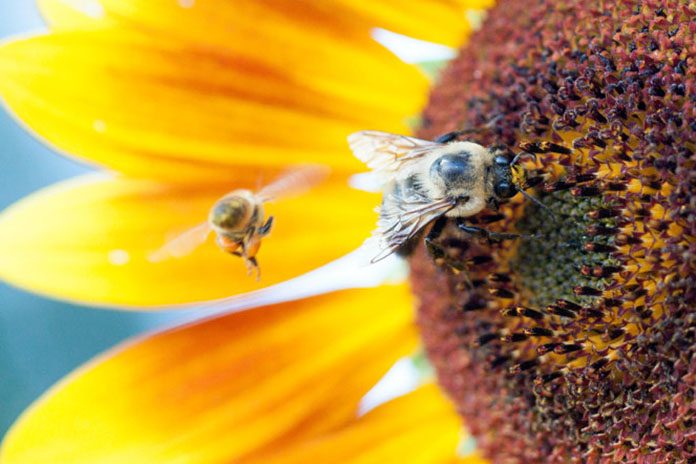
Growers across Oregon are recognized for their bee-friendly practices. With over 200 specialty crops grown in a state already characterized by its rich diversity of natural areas, Oregon boasts a pollinator population with approximately 500 species of bees.
In 2016, the Oregon Department of Agriculture’s Insect Pest Prevention and Management program (IPPM) began developing a pilot program to support Oregon farmers protecting pollinator populations. During the early stages of the project IPPM staff set to work connecting with others in the state. In reaching out to program managers and scientists at ODA’s Pesticides Program, the Oregon State University Extension Service, and the Oregon Department of Forestry, the agencies realized that they shared many of the same pollinator health objectives. Together, along with other leaders in industry, education, and research, the agencies launched the cooperative effort, the Oregon Bee Project, in 2017 to coordinate the development of multiple statewide initiatives for pollinator health.
One such initiative is the Oregon Bee Project Flagship Farm Program (largely funded by a USDA Specialty Crop Block Grant), which is in its second year of working with individual farmers and nursery owners on a voluntary basis to enhance pollinator habitat in Oregon.
When the Oregon Bee Project Flagship Farm Program was introduced at the Small Farms Conference in Corvallis in 2017, 35 farmers immediately expressed interest in joining. It was clear through early discussions with stakeholders that there was a strong desire for programming in the state that would recognize land managers’ efforts to add pollinator habitat, and to provide resources to promote their work and enhance habitat using proven management practices.
After running the first year of the program with six Oregon farms, the Oregon Bee Project is growing the Flagship Farm Program and looking to add 29 more farms and nurseries to the list. These farms and nurseries are recognized for promoting pollinator diversity through a combination of practices. Among the practices emphasized are maintaining habitat, using Integrated Pest Management strategies, judicious use of pesticides, demonstrating good communication with beekeepers, and supporting crops that provide floral resources for bees. Participants receive site-specific advice and information, promotional materials, and statewide recognition by being involved.
“There may be a misconception that a crop plant is not a good resource for bees,” says Sarah Kincaid, IPPM entomologist. She is one of a handful of state agency staff leading the Oregon Bee Project and is directly involved with the development of the programming for growers. “Just like the crop needs pollination, the bees need the food resource, the pollen and nectar (that the crop provides).” In the Willamette Valley, for example, fields are filled with mixed crops, berries, orchards, and high value seed crops that provide dense patches of food for bees. Conversely, in Eastern Oregon, the cold winters and hot summers set the stage for brief flushes of vibrant wildflowers along with fields of warm season crops such as squash and melons which makes for excellent habitat. The various stages of growth and crop development created by these settings support diverse species of bees.
Time and time again ODA’s Kincaid has encountered farmers passionate about managing their land for pollinators. Out of personal interest, one Eastern Oregon hay farmer she met in 2017 put pollinator plantings in the non-productive borders of the fields. Pollination is not required to produce a hay crop, but that didn’t stop this farmer from investing resources in wild bees. Likewise, many farmers of bee-pollinated crops have begun providing additional floral resources during times when their crops are not in bloom, thus ensuring that’s bees have access to flowers all season long.
By producing diverse flowering crops, providing undisturbed natural areas along field margins, and using pesticides wisely, many farms can support a wide array of wild and managed bees. Through the Flagship Farm Program, ODA hopes to incentivize creative and innovative bee-friendly practices across all sectors of agriculture.










